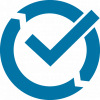Related Content
 |
5 Tips for Choosing Your First Agile Project When transitioning to agile, applying agile methods to a single project is a great way to get started. However, care must be taken to ensure the project you choose is appropriate—it shouldn't be too large, take too long, or be too risky. Here are five tips to help you pick the right project for your agile pilot. |
|
 |
Driving Continuous Improvement to the Entire Organization In traditional agile approaches, retrospectives are valuable to team improvement. However, when teams encounter organizational issues beyond their control, such as project structure, interorganizational communication, or resources, it's more difficult. Here's how to expand continuous improvement to the whole company. |
|
 |
Troubled Project or Disaster? Understand What You Can Manage There is a big difference between a troubled project and a disaster, and not being clear about the distinction is hazardous to decision-making. If a project you're managing is in danger of missing deadlines, that doesn't mean it's out of control—you just need to explain to stakeholders how it can get back on track. |
|
 |
How to Keep Employee Engagement High on Difficult Projects Having engaged employees is about more than having happy workers. Research shows that engagement is also one of the most important factors for giving a company a competitive edge. This is why it is so important to identify issues of demotivation and act on them as soon as possible in order to keep employees motivated. |
|
 |
The Subtle Art of Diplomatic Communication with Project Sponsors It’s an art to balance project sponsors’ need for timely and accurate information with being diplomatic in how and when that information is delivered. Diplomacy is about tact—communicating in tough situations without antagonizing anyone more than necessary. Here are eight keys to diplomatic, effective communication. |
|
 |
Balance Technical and Social Skills for Project Success Software testing is a socio-technical undertaking, which means that effective test strategies must incorporate a balance of technical capabilities relating to processes and tools and social capabilities used for communication and problem-solving. This balance enables true project success. |
|
 |
Don’t Let Too Little Planning Tank Your Agile Adoption Many organizations turning to agile believe it means you don't have to do any planning. This couldn't be further from the truth. A healthy agile team does just as much (if not more) planning than a team using a waterfall methodology. Preparing and setting goals sets up the team for a more successful agile adoption. |
|
 |
If You’re Working Too Much, Is It a Challenging Project or Bad Management? Projects sometimes encounter challenges that require team members to put in extra work. But if this is happening repeatedly, it's worth figuring out where the pressure is coming from. You may need to ask, “Is this project simply challenging, or is it being badly managed?” |





